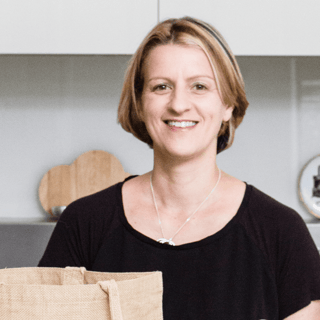Round 2 is now closed
Register your interest for the next round in September
Are you constantly feeling bloated, windy, uncomfortable, or nauseous?
Do you experience abdominal pain, constipation or diarrhoea?
Have you ever avoided going to a social engagement due to worry about feeling unwell afterwards?
Or maybe you feel you know where every single public toilet is in your home town… city… country!
If any of these are the case, a low FODMAP diet may help you!
Who is it for?
 The best way to describe this program is to describe what it isn’t. This is not a fad, weight loss diet. This is not something that you do on a whim to make your skin glow and your clothes fit better (although that may well happen).
The best way to describe this program is to describe what it isn’t. This is not a fad, weight loss diet. This is not something that you do on a whim to make your skin glow and your clothes fit better (although that may well happen).
This program is for people who experience bowel symptoms that impact their quality of life and need to find a solution to their problems. The overall objective is to determine which foods are triggers for your IBS and which ones you can safely re-introduce into your diet.
Research indicates that most people do not react to all the high FODMAP groups of foods. Identifying these means that we can re-introduce the groups of foods you didn’t react to, then determine how much of those you did react to you are able to tolerate. Long term, your life will be easier for the following reasons:
- Most people with IBS are able to re-introduce high FODMAP foods and maintain good symptom control. This means more control over your symptoms, and easier to make informed choices when not in control of food choices.
- Including high FODMAP foods avoids unnecessary restrictions and helps to ensure that your diet meets your nutritional needs.
- Many high FODMAP foods are also high in prebiotics; compounds which provide food for the healthy bacteria that are found in your gut. Research indicates that long term avoidance of these may affect the health of your bacteria, and your gut.
How the program works
 Most people find following a low FODMAP diet program fairly manageable.
Most people find following a low FODMAP diet program fairly manageable.
The first four weeks are the elimination stage, where you will eliminate trigger foods. This includes certain fruits and vegetables, lactose containing dairy, wheat, some alcohol and most processed foods. This might feel like there will be nothing left to eat, but don’t worry there are still many delicious foods you can enjoy and we will help you with meals, recipes and snack ideas. Depending on your individual response, you are likely to find your symptoms have reduced in 2-4 weeks.
The next 8 weeks are the challenge weeks where typical trigger foods are re-introduced into the diet.
- Week 1 – Fructose
- Week 2 – Lactose
- Week 3 – Onion Fructans
- Week 4 – Garlic Fructans
- Week 5 – Polyols – Mannitol
- Week 6 – Polyols – Sorbitol
- Week 7 – Wheat Fructans
- Week 8 – Galacto-oligosaccharides
By signing up to the challenge program you will receive 12 weeks of meal plans, along with other resources, like a private Facebook group, to make this as easy for you as possible.
What's included?
The challenge program
The 12 week Low FODMAP Diet Program has been put together to help you determine what foods are triggers for you, so you can manage your IBS symptoms to lead a more happy, healthy life.
The program includes:
- 12 weeks of meal plans (4 weeks in rotation – including challenge week meal plans)
- Recipes
- Shopping list
- Low/High FODMAP diet list
- Suggestions of other useful resources
- Access to a private Facebook group
In our experience we found that people with IBS can feel socially isolated, which is why the private Facebook group has been set-up so that we can share advice and provide support with a group of like-minded people. You can use this forum as much or as little as you wish, and your membership to the group doesn't end after your 12 weeks – you can continue to use the group for tips and advice as long as you wish.
The meals
Throughout the 12 weeks, you will be able to experience a wide selection of low FODMAP meals. Most meal options have a recipe included. There are 4 weeks of rotating meal plans, however please feel free to pick and choose meals that are right for you, easiest to cook or repeat your favourites more often.
Part of the reason for different options each day is to allow more variety and meal options, however we do not expect you have something different for each meal, each day (unless you want to). We totally understand how time consuming this can be.
Cooking meals in advance to freeze, having left overs for lunch or having the same thing for breakfast most days is encouraged, as this will save you time, and make your life easier.
The food list
As part of your package, a comprehensive list of which foods are low and high FODMAP has been included. This list is much more comprehensive than the one you may have already downloaded from our website.
Qualified advice every step of the way
Monica Kubizniak
With over 16 years experience Monica is highly knowledgeable and an Accredited Practicing Dietitian… not a celebrity chef.
Monica’s main objective is to help people incorporate nutritional science into their own lives as easily as possible, to improve health, energy and quality of life.
She specialises in nutrition for arthritis and autoimmune conditions (the anti-inflammatory diet), irritable bowel syndrome (IBS) and food intolerances, and weight management. Monica believes that using food as medicine, there is a wonderful opportunity to significantly improve wellbeing for each individual and work along side any medical treatment that may be required to enhance health outcomes.
During this program Monica will be available to answer questions via the Facebook group. If you feel you need extra support, private appointments, either via Skype or in person (if you are in Sydney) can be booked for an additional fee.
"My role is to make it as easy as possible for you to make changes to your lifestyle that moves you towards achieving your health vision. So I don't just provide diet education, but I am also a motivator and coach."

What are FODMAPs?
Why low FODMAPs
Research shows that following a diet that is low in FODMAPs may relieve symptoms of IBS. FODMAPs are sugars that are found in food, and are poorly absorbed in people with IBS. FODMAPs, stands for Fermentable Oligosaccharides, Disaccharides, Monosaccharides and Polyols. They act as a food source to bacteria that live in the large intestine. When they are not absorbed properly, they are fermented. This can result in bloating, flatulence, abdominal pain, diarrhoea, constipation, nausea and other gastrointestinal symptoms.
The following video, created by the team at Monash University* provides a wonderful summary about FODMAPs:
It is important to remember that high FODMAPs foods are not always the only culprit for IBS symptoms. Consider being aware of your reaction to fatty foods, caffeine, alcohol, fibre (excess or lack of), medications and stress, which may also influence your symptoms
What are FODMAPs?
Oligosaccharides:
Fructans, which mostly comes from wheat products and some vegetables. It also includes inulin (a type of fibre), which is often added to yoghurt, and fructo-oligosaccharides, which are found in packaged foods.
Galacto-oligosaccharides (GOS) are found in legumes. The technical names are raffinose and stachyose.
Fructans and GOS are poorly absorbed by all individuals, we just differ in the amount our body can tolerate them and therefore sensitive individuals experience noticeable symptoms ranging from mild to severe.
Disaccharides:
Lactose, a sugar which naturally occurs in varying amounts in milk and milk products. People vary in the amount of lactose they can absorb. As we get age, we have less lactase, the enzyme that breaks down lactose. Tolerance can also be impacted by things like food poisoning. Some ethnic backgrounds (particularly those of Asian descent) naturally have less lactase and tend to be more prone to lactose intolerance.
Monosaccharides:
Fructose, often referred to as ‘fruit sugar’. It is naturally present in all fruits, and also in many other foods. It is usually only a problem if the food contains more fructose than glucose, or if we eat too much in one sitting.
Polyols:
Includes sorbitol and mannitol, that are naturally occurring in some fruits and vegetables, while maltitol, xylitol, isomalt and polydextrose are used to artificially sweeten food and as food additives. Food packaging with artificial sweetener as an ingredient will often state ‘excess consumption may have a laxative effect’. Polyols are only partially absorbed by everyone. Note these polyols may be listed in the ingredients list by their additive number: Sorbitol (420), Mannitol (421), Maltitol (965), Xylitol (967), Isomalt (953) (contains sorbitol and mannitol), and Polydextrose (1200) (10% sorbitol).
It is important to remember that some foods contain more than one type of FODMAPs.
Join Our Diet Community
Enter your details for healthy recipes, diet updates, tips and free downloads
Disclaimer: The information provided in this program is accurate, to the best of our knowledge at the time of publication.
*We have no affiliation with Monash University, or with the developers of these apps, we simply believe they are great products/resources!
BJC Parramatta
Level 1, 17-21 Hunter Street,
Parramatta NSW 2150
Tel: +61 2 9890 7633
Fax: 02 98907655
BJC Chatswood
Ground floor, 7 Help Street,
Chatswood NSW 2067
Tel: +61 2 9413 2979
Fax: 02 9413 3316
BJC Bondi Junction
Suite 105, Level 1, 332-342 Oxford Street,
Bondi Junction NSW 2022
Tel: +61 2 9055 1790
Fax: 02 9169 3497

